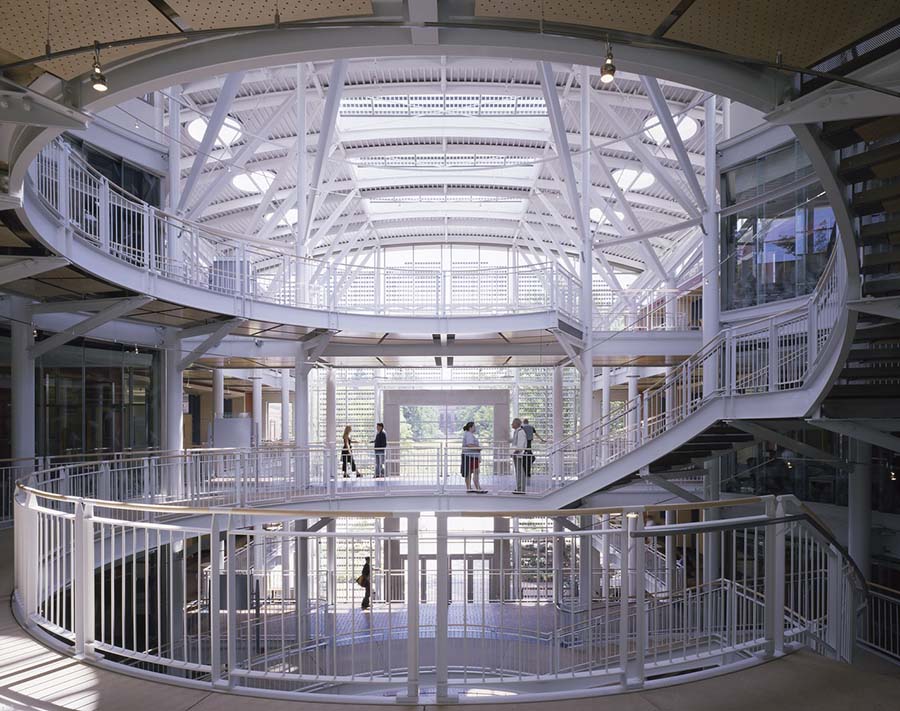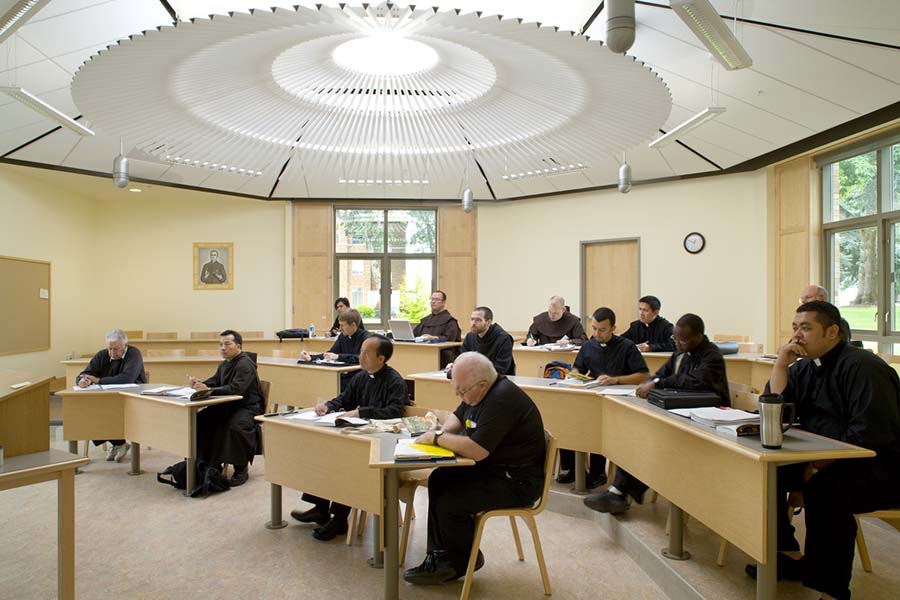Traditionally, an architect is trained to use structure as a fundamental shaper of space. Then we realized, through working with researchers, that comfort is a primary shaper of people’s experience of a space. Now that we are becoming aware of the impact of microbial communities and building materials, we are asking what can we do to design healthier buildings? We are asking questions and working with clients, scientists, and researchers to develop new ways of evaluating materials and building.
In October, I gave a presentation at the Microbiology of the Built Environment (MoBE) conference at the National Academy of Sciences, Engineering and Medicine about the influences of microbial research on architectural practice. When I received the invitation, I initially thought it was a mistake. In fact, I actually forwarded it to some researchers we collaborate with, sincerely believing it was meant for them. Then I realized that I was going to be there to tell a story that changed the culture of our firm, our approach to design, and the character of our projects. It is the story of an 18 year collaboration with researchers from the Energy Studies in Buildings Laboratory (ESBL) at the University of Oregon that has involved over 100 projects.

It started with the Lillis Business Complex at the University of Oregon. We were committed to creating a high-performing building, and with ESBL’s assistance, we identified a series of fundamental strategies. Effective daylighting was essential to reduce lighting and cooling loads. We also sought to incorporate natural ventilation to passively cool the building. We realized that if we incorporated thermal mass and ceiling fans we could expand the comfort range of the occupants by five degrees. While that may not seem like a lot, it meant that if we included a night flush strategy, we had the option of passively cooling the building. The university was concerned about committing to a completely passive approach and required us to include a mechanical cooling system. But it turns out that cooling is actually required in a heavily used 60-person case study room for a total of 4 hours out of the entire calendar year, all of them after 5pm. This was a breakthrough moment for us. To realize that we could make people more comfortable and use less energy to do it felt amazing. The net result was a 140,000 SF building that was 43% more efficient than the Oregon Energy Code.

We felt a real sense of accomplishment, and we believed we could do even better at maximizing comfort through daylighting and passive cooling systems. Our next opportunity was an academic building at Mount Angel Abbey. The monks challenged us to use daylight as much as possible and to have no active cooling system. Working with ESBL, we developed a combination of a skylight with operable louvers and a daylight reflector suspended below it to create evenly distributed daylight throughout the classroom. The result is that 95% of the time the building is in use, no electric lighting is required. I get to say that in part because they do not have night classes, but it is still a noteworthy accomplishment. The 21,000 SF building is comfortable year-round, has no active cooling system, and is heated by a boiler smaller than an under-desk file cabinet. This time the building was 62% more efficient than the Oregon Energy Code.


Meanwhile, GZ Brown and ESBL became part of the BioBE project led by Jessica Green organized to study microbial communities within buildings. They chose the Lillis Business Complex as a project to study. They swabbed 300 locations within the building and discovered that it made a difference to the microbial communities if the spaces were served by natural ventilation or mechanical ventilation. Patterns emerged such as similar spaces having similar microbial communities. Generally, the microbial community in the mechanically ventilated spaces was similar to those associated with humans, and the microbial community in the naturally ventilated spaces was similar to the microbial community in soil and water outside the building. At the MoBE conference there were over 40 presentations about ongoing research to understand the impact of such microbial communities upon human health. While a great deal of research remains to be done, the big question in the room was how are the decisions we make impacting people’s health?

The Knight Cancer Research Building toxins challenge came next. A lot of building materials contain carcinogens, and a priority for the researchers who would use this new facility was not using building materials that can cause cancer. Parallel to the microbial research mentioned above is research being conducted on chemical reactions with building materials. So we developed a way of prioritizing those materials based on their harmful impact and assigning a score to each material before making decisions about which materials to include in the project. We also found ourselves wondering about a relationship between toxic materials and the microbial community. What might their combined impact upon health be?

Finally, this discussion also connects to the current resurgence of interest in Mass Timber Buildings. We are involved in the design of a 200,000 SF parking structure that incorporates an innovative cross laminated timber (CLT) structure. It is part of the Glenwood project for Springfield, Oregon, and it is a four-story open-air parking structure that will be net positive for energy and water. We were concerned about wind-driven rain causing damage, so we engaged researchers from ESBL and the TallWood Design Institute (a collaboration of the College of Design from the University of Oregon with the College of Forestry and the College of Engineering from Oregon State University). We asked what is at work when wood decays? The answer was microbes, fungi, and insects, and the fundamental advice was do not let the wood get wet. ESBL researchers told us which way the wind blows when it rains and how hard, so that we could provide shelter for the wood structure. The Tall Wood Design Institute researchers are researching potential membranes for the CLT floors to prevent water dripping from cars causing damage and identifying breathable coatings for the wood structure. The innovative post tensioned rocking CLT shear wall system used in the building also underwent a shake table test at the University of California San Diego in July. The test involved two successive Northridge equivalent earthquakes and the results were very impressive with the walls exhibiting essentially no meaningful damage.

Right now, there are still many questions, but that’s why collaborative interdisciplinary events like the MoBE conference are so important. Answers to these questions will keep raising the standards for how we design and build. Looking back upon the impact our collaboration with ESBL has had upon consulting engineers, contractors, subcontractors, the standard of care employed by workers in field, and owners who now expect a higher level of performance, we perceive the potential for research to have lasting impacts upon the buildings we occupy. We also sense the potential for microbial research to have comparable impact upon the built environment. For that to happen the research needs to continue, and the design community needs to be connected to it, so that we can apply the resulting knowledge and ask questions that prompt further research. My closing request to the 200 researchers in the room was to ask them to engage the design community in their research. Together we can shape better places for us to live, learn, work and play. Places that bring beauty to our lives, inspire us, and keep us healthy.


